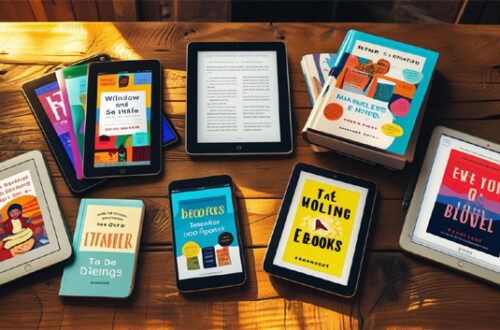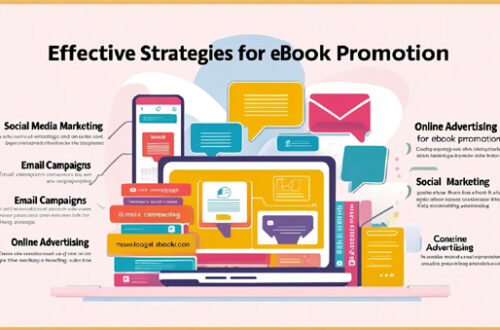
Why eBooks Are Good for Authors (Alongside Publishing Paperbacks)
In today’s publishing world, authors have more options than ever before. The traditional model of print publishing has been joined by the rise of digital books, creating a flexible and accessible platform for writers to reach readers across the globe. While paperback books continue to hold their charm and relevance, the growing popularity of eBooks has opened new doors—especially for authors. Embracing both formats can offer the best of both worlds, combining the tangible pleasure of print with the dynamic reach and convenience of digital.
Wider Audience Reach
One of the biggest advantages of publishing eBooks is the ability to reach a global audience. With just a few clicks, readers from different countries can download an author’s work to their device, bypassing shipping costs and delays. Digital books can be sold through numerous platforms such as Amazon Kindle, Apple Books, Kobo, and Google Play, as well as Author Websites, all of which make it easier for readers to discover new authors. For writers trying to build a following or break into international markets, eBooks offer unmatched access.
Paperbacks still hold their place in physical bookstores, at book fairs, and for readers who prefer the feel of a real book. But the reach of a printed book is limited by inventory, distribution, and geography. By adding an eBook version, authors eliminate those barriers and open the door to a worldwide readership.
Lower Publishing Costs
Publishing a paperback often comes with significant costs—printing, shipping, storing, and in some cases, returns. Self-published authors might have to pay upfront for printed copies, or rely on print-on-demand services, which can cut into profits. In contrast, eBooks have minimal overhead. Once the book is formatted and uploaded, it can be sold repeatedly at little or no additional cost.
This low-cost entry makes eBooks especially appealing for new or independent authors. It allows them to publish without financial strain, test their ideas, and build an audience before committing to larger-scale print runs. Authors can also make updates and corrections easily, something much harder to do with a printed book.
Traditional paperback publishing can be a slow process, often taking months (or even years) to move from manuscript to finished product. With eBooks, the turnaround is much faster. Once the book is edited and formatted, it can be uploaded and published almost instantly.
This speed is beneficial for authors who want to release books in a series quickly, respond to market trends, or simply get their work out into the world without unnecessary delays. It also allows for quicker feedback, enabling authors to make adjustments based on reader responses or reviews.
Greater Flexibility and Control
Publishing an eBook gives authors full control over their content, design, pricing, and marketing. They can experiment with different cover designs, change pricing to suit promotions or demand, and tailor the content to a specific audience. This level of flexibility is rarely available in traditional print publishing.
For authors who also publish paperbacks, this control can be extended to both formats. A paperback can serve as a beautifully designed keepsake or collector’s item, while the eBook becomes a versatile, affordable version for everyday readers. Having both options increases the author’s ability to appeal to diverse reader preferences.
Ebooks can give increased earning potential – While the retail price of eBooks is often lower than paperbacks, authors can earn more per sale. eBooks typically have higher royalty rates—often up to 70%—compared to paperbacks, which might offer royalties as low as 10%. This means that even at a lower price point, authors can make a larger profit per unit sold.
When combined with paperbacks, authors can cater to a broader market. Some readers will always prefer the feel and collectability of a physical book, while others value the convenience and affordability of digital. Offering both formats increases the potential for sales and income.
Accessibility and Convenience for Readers
eBooks can be downloaded instantly, read on various devices, and carried around without adding weight to a bag. For readers with visual impairments or other challenges, eBooks offer customizable font sizes and screen adjustments that paperbacks cannot. By offering an eBook version, authors ensure their work is accessible to more readers.
Paperback lovers still have their place and having a physical copy available appeals to those who enjoy the tactile experience. By publishing in both formats, authors respect the reading preferences of all audiences, which builds trust and loyalty.
Ultimately, eBooks and paperbacks are not in competition—they complement one another. A reader might first discover an author through an affordable eBook and then choose to buy a paperback copy for their shelf. Book clubs might enjoy having print versions while individual members prefer digital copies. Libraries often stock both, and authors benefit from being available in multiple formats.
Authors who embrace both eBooks and paperbacks are not dividing their efforts—they are multiplying their opportunities. Each format brings unique strengths to the table, and together, they create a fuller, more flexible, and more profitable path for modern writers.
In conclusion, eBooks offer numerous benefits for authors, from cost-effective publishing to global reach and flexible control. When paired with paperbacks, they allow writers to cater to every type of reader and create a sustainable and rewarding writing career. Embracing both is no longer optional—it’s simply smart.




